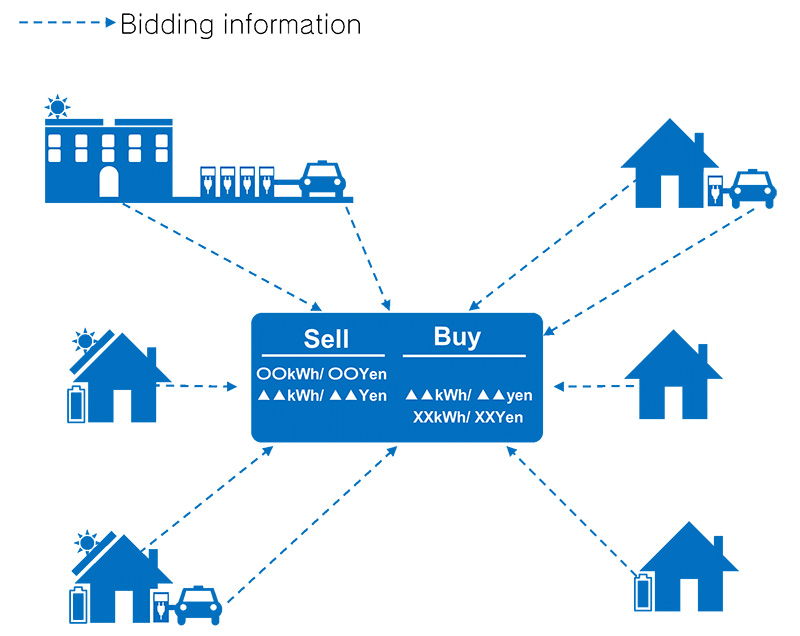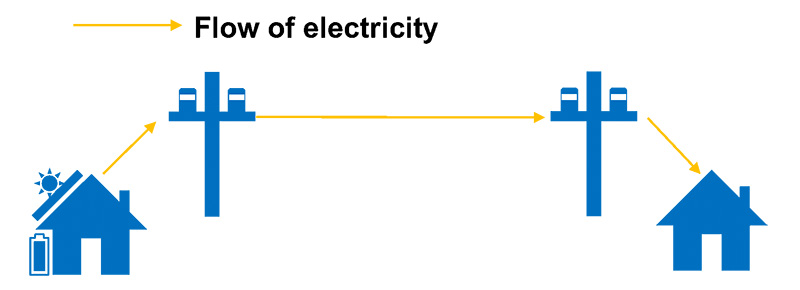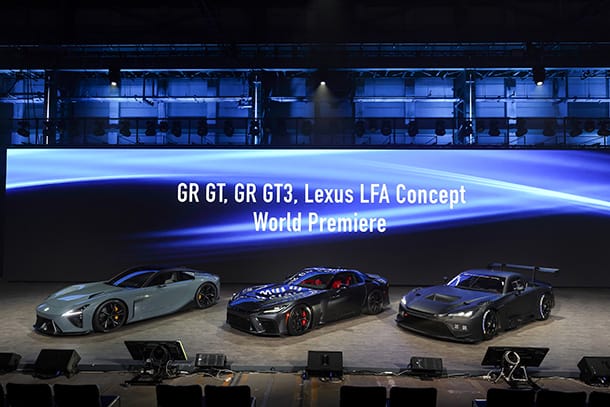May 23, 2019
The University of Tokyo, Toyota, and TRENDE to Begin Testing of Next-generation Electricity SystemAiming for the efficient usage of electricity, the three parties will test a system for trading electricity between individuals by utilizing distributed power supplies such as solar panels, secondary batteries, and electrified vehicles.

Tokyo, Japan, May 23, 2019―The University of Tokyo (UTokyo), Toyota Motor Corporation (Toyota), and TRENDE Inc., (TRENDE) will jointly conduct tests, from June 17 at Toyota's Higashifuji Technical Center and the surrounding area, on a next-generation electricity system (P2P1 electricity transactions) that enables homes, businesses, and electrified vehicles connected to the electricity grid to trade electricity using blockchain2.
As distributed power supplies such as solar panels, secondary batteries, and electrified vehicles become increasingly widespread, Japan's electricity supply system is in a transitional state as it shifts from its traditional large-scale consolidated system to a distributed system by which individuals and businesses own their own power supply. The objective of the test is to verify the economic advantage of having prosumers3, who generate electricity with their own distributed power supply, trade electricity with electricity consumers, via an electricity exchange market, at prices that reflect supply and demand conditions, and to assess the feasibility of a two-way, self-autonomous electricity supply system that allows direct trading with other prosumers.
Specific steps of the test include the establishment of an electricity exchange accessible by households and businesses participating in the test, and the installation of an AI-powered electricity management system (an electricity trading agent) in each household and business. The electricity trading agent places orders to buy and sell electricity in an electricity exchange based on electrical consumption and forecasts of electrical power to be generated by solar panels at households and businesses. Electricity transactions between individuals are implemented using a defined algorithm that matches buy and sell orders that are collected in the electricity exchange from each household and business.
This is the world's first4 test for electricity trading between individuals that incorporates PHEVs as a distributed power supply, in addition to solar panels and secondary batteries. The test aims to verify the economic advantage of having electricity consumers and prosumers trade electricity through market transactions. It will also simulate electricity consignment fees based on distance5, and verify an algorithm for predicting the electricity demands of electrified vehicles, which have varying electrical consumption levels based on cruising range.
Overview of Testing
| Purpose of testing | Minimize electric bills through P2P electricity transactions, and verify feasibility as an electricity supply system. |
|---|---|
| Testing period | June 17 2019 to May 2020 (one year) tentative |
| Testing location | Toyota's Higashifuji Technical Center and the surrounding area |
| Monitors participating in the testing |
|
| Electricity pricing | Pricing varies according to supply and demand volume. |
| Role of each party |
|
Concept Diagram
- Bidding information from each household, business, and PHEV is consolidated at the electricity exchange.
- The electricity exchange completes transactions by matching sell and buy conditions.
- The traded electricity is implemented over the power distribution and transmission grid according to the completed transaction.
| 1 | This is an abbreviation for Peer to Peer, which is a mechanism for executing transactions wherein each terminal, called a node, communicates directly on an equal basis, instead of being dependent on a specific server or client. |
|---|---|
| 2 | This is also called distributed ledger technology, which is used to build inexpensive databases in which all network participants share the ledger information in order to make it resistant to unauthorized modification. |
| 3 | This term was coined by merging the words "producer" and "consumer," and refers to an electricity consumer who is also a producer of electricity using self-owned power generation equipment. |
| 4 | As of May 23, 2019. Research conducted by TRENDE. |
| 5 | This is a scheme for varying electricity consignment fees based on the length of the electricity transmission and distribution distance. |







